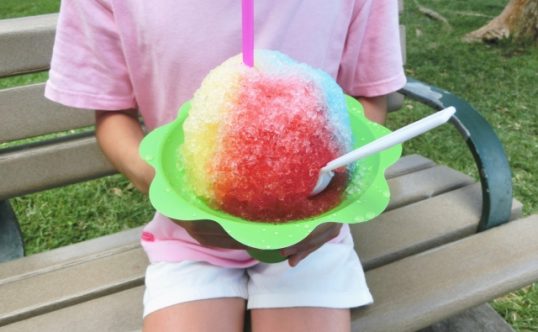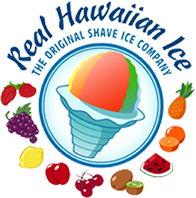Shave Ice: A Dessert History Around The World

Traced back thousands of years, ice has been used to chill food and drink. Often it was only available to the world’s aristocrats and privileged. The first possible record of shaved ice in the world leads back to China in 1100 BC! As this commodity became more readily available, how did it morph into this delicious shave ice treat we enjoy today? Are there other delicious, rainbow-colored shaved ice treats on the other side of the world?
There are differing opinions out there on where it all started, but what we do know is that even with each country’s unique renditions of the beloved shave ice there are always a couple defining characteristics of shaved ice.
- Soft, fluffy shaved ice
- Delicious, sweet syrups
- Fruits, either fresh or preserved
Let’s take a quick trip around the world and look into what makes each country’s shaved ice dessert a speciality to the locals.
CHINA & TAIWAN
Recorded in history as one of the oldest shaved ice delicacies – China’s baobing and Taiwan’s xue hua bing are icy, tropical hits.
Typical additions include:
- Fruit syrups
- Fresh-cut fruits such as mango,coconut, lychee, strawberry
- All sorts of sweet beans
- Taro
- Grass jelly
Taiwanese shaved ice is known to be made out of a milk or cream base that makes it lush and creamy. It has a distinctive ribbon look by the way it gets shaved.
Modern ice shops have a variety of fun flavors/toppings that include
- Jelly Bellys
- Pocky
- Oreo
- Sweet breakfast cereals
JAPAN
Speculated as one of the origins of shave ice – Japan’s kakigori found its place during the warm seasons and as a staple matsuri food, or festival foods.
The traditional kakigori, ujikintoki kakigori consists of fluffy, snow-like shave ice topped with:
- Anko or red bean paste
- Matcha green tea syrup
- Shiratama dango a type of sweet, chewy and gooey mochi made of glutinous rice flour
- Green tea ice cream
- Condensed milk
Japan has syrups similar to Hawaiian shaved ice flavors as well as some special syrups including:
- Red strawberry/cherry
- Blue raspberry
- Green melon
- Yellow yuzu citrus
Japan’s modern ice shops also do a variety of different toppings and designs. One other special type of kakigori is a shirokuma style which means “polar bear” in Japanese, toppings will often be arranged into the shape of a bear’s face.
KOREA
First recorded during the Joseon Dynasty (1392 – 1897), Korea’s patbingsu delighted the elite members of society during hot summer months. The traditional patbingsu was complete with just three toppings:
- Red bean paste
- Tteok or korean rice cakes
- Ground nut powder
Other variations or bingsu have additional/different toppings and syrups such as
- Fruits
- Tteok
- Cereal flakes
- Chocolate syrup
- Condensed milk
- Nuts and seeds
- Misutgaru or roasted rice and grain powder
MALAYSIA AND SINGAPORE
Sporting a couple different names, Malaysia’s best known shaved ice: ais kacang is also sometimes called air batu campar (“mixed ice”) or ABC for short. “Kacang” means nuts, so one popular topping spotted on ais kacang is peanuts along with:
- Red beans
- Evaporated milk
- Fresh exotic fruits (Rambutan, Jackfruit, Durian)
- Jelly (grass jelly or agar agar)
- Sweet corn
- Cendol
- Palm sugar
- Rose
INDONESIA
Very similar to Malaysia’s ais kacang, Indonesia’s es campur has common toppings such as:
- Nata de coco
- Avocado
- Grass jelly
- Basil seeds
- Condensed milk
- Coconut milk
Es campur is unique feature is its signature neon-pink color thanks to a certain syrup.
THAILAND
Moving along southeast Asia, Thailand joins the crowd with their shaved ice, nam kang sai. With plenty of ingredients ready to mix and match just like other shaved ices we’ve explored, nam kang sai has toppings such as:
- Coconut soaked in coconut milk
- Black sticky rice
- Chestnuts
- Grass jelly
- Corn
- Red bean
- Lotus root
- Sweet syrups
- Coconut milk
We’ve named just a few of possible ingredients to choose from and if you’re feeling choice overload, we understand. Another way to order nam kang sai is asking for nam kang sai ruam mit. Which is basically the vendor’s choice to mix what they want for you.
PHILIPPINES
If you’re ready to mix things up, the Philippines’ shaved ice dessert halo-halo will do just that! “Halo” in Tagalog means “mix”, and that means mixing the popular purple colored ube halaya or ube jam with any of the following:
- Jellies
- Beans (Red bean, Mung bean, Kidney bean, Garbanzo)
- Corn
- Fresh & candied fruit (Plantains, Jackfruit)
- Leche flan
- Evaporated or condensed milk
- Ube Ice cream
Halo-halo is a childhood hodgepodge of brightly colored deliciousness.
PUERTO RICO
Is your mouth watering like ours yet? Hang tight as we make our way over to Puerto Rico to check out their piragua. Typically sold by street hawkers or piragueros, piragua has fruit flavors such as:
- Lemon
- Strawberry
- Passionfruit
- Guava
It is usually just eaten straight from the cup or sipped through a straw.
HAWAII
Our last and final stop, paying tribute to our favourite, Hawaii. Hawaiian shave ice was introduced as Japanese immigrants travelled to Hawaii to work on sugar plantations. Much finer and more powdery than sno-cones or snow cones, there are also more exotic flavors to choose from like:
- Boysenberry
- Lychee
- Horchata
- Li hing mui or salty dried plum
- Tamarind
- POG or passion fruit – orange – guava
To check out even more shaved ice flavors read what Real Hawaiian Ice has to offer here.
